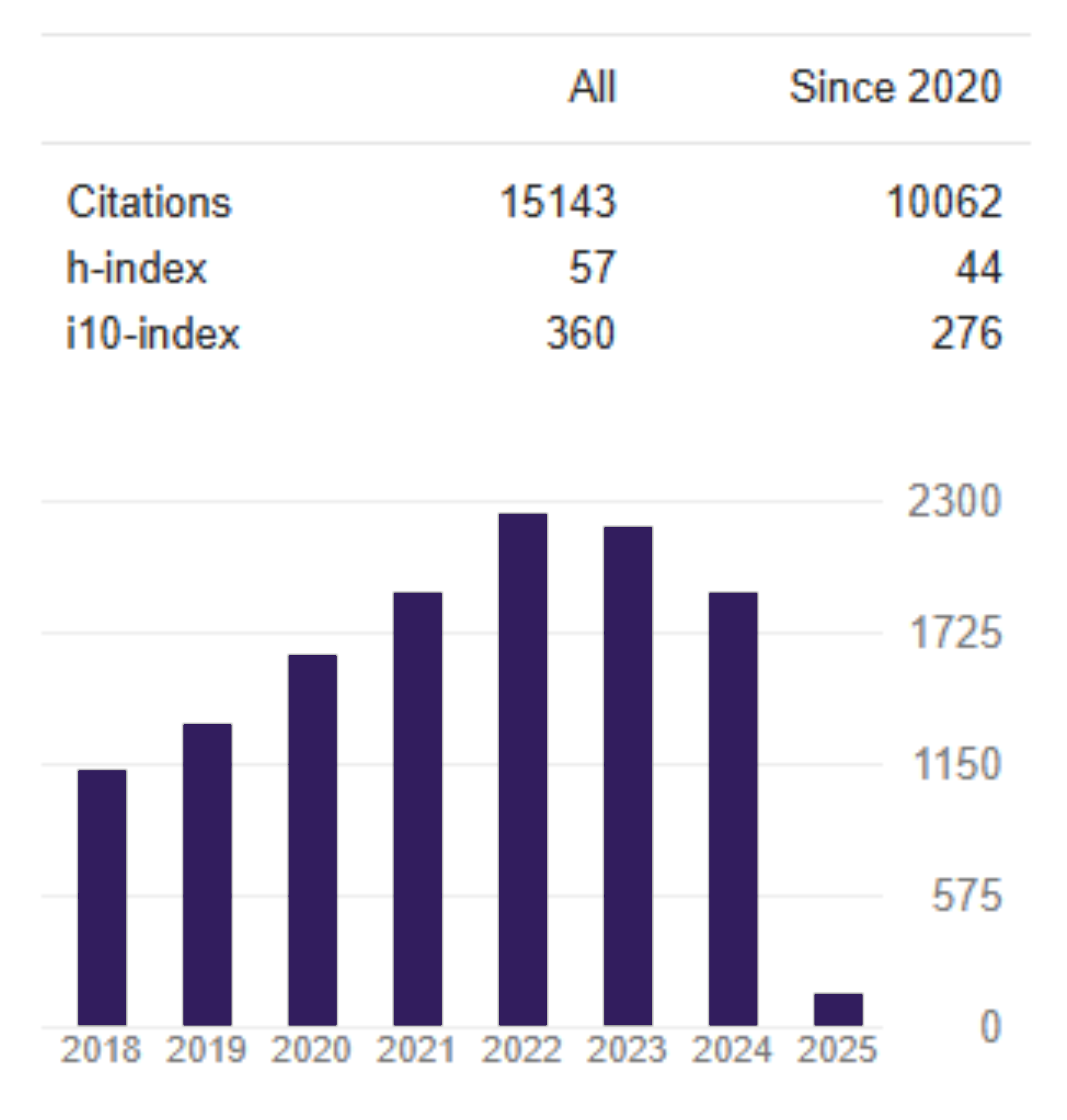Factors Affecting Commercial Bank’s Net Interest Margin: Study Case in Indonesia, Thailand, and Philippines.
DOI:
https://doi.org/10.26905/jkdp.v27i2.9598Keywords:
Commercial Banks, Financial Institutions, and ServicesAbstract
The aim of this research is to investigate determinants factors of Commercial Banks’s net interest margin in Indonesia, Thailand, and Philippines. This study uses quarterly panel data from 2010 until 2020. The OLS Equation Model was used to analyze the macroeconomic factors and banks' specific factors towards Net Interest Margin (NIM). The result showed that inflation rate as the only one factor from Macroeconomic factors and Overheard cost is one from Bank Specific factors which significantly affect Net Interest Margin in all of these countries. Other than that, valuable findings from this research show that determinants factors which have significant impact from bank specific characteristics in each country are different. In Indonesia, Higher Size of operations, Risk Aversion and Income Diversification are determinants factor that can lower net interest margin. Bank in Indonesia have to manage their credit risk well, because this factor can potentially lead to higher NIM. Commercial Banks in Thailand and Philippines show opposite result. Larger size of operations and higher risk aversion will lead to higher NIM. Market concentration plays a critical role to minimize NIM in Philippines. So, regulators should maintain this condition. Because higher competition potentially led to higher NIM in Philippines’s bank.
DOI: 10.26905/jkdpv27i2.9598
Downloads
References
Agapova, A., & McNulty, J. E. (2016). Interest rate spreads and banking system efficiency: General considerations with an application to the transition economies of Central and Eastern Europe. International Review of Financial Analysis, 47, 154–165. doi: 10.1016/j.irfa.2016.07.004
Antwi, G. O.-, Banerjee, R., & Antwi, J. (2017). Interest Rate Spread on Bank Profitability: The Case of Ghanaian Banks. Journal of Accounting, Business and Finance Research, 1(1), 34–45. doi: 10.20448/2002.11.34.45
Calice, P., & Zhou, N. (2018a). Benchmarking Costs of Financial Intermediation around the World. Benchmarking Costs of Financial Intermediation around the World, (June). doi: 10.1596/1813-9450-8478
Calice, P., & Zhou, N. (2018b). Benchmarking Costs of Financial Intermediation around the World. World Bank, Washington, DC. doi: 10.1596/1813-9450-8478
Chirwa, E.W., & Mlachila, M. (2004). Financial reforms and Interest Rate Spreads in the Commercial Banking System in Malawi. IMF Staff Papers, 51(1): 96-122.
FungáÄová, Z., & Poghosyan, T. (2011). Determinants of bank interest margins in Russia: Does bank ownership matter? Economic Systems, 35(4), 481–495. doi: 10.1016/j.ecosys.2010.11.007
Gelos, R.G. (2006). ―Banking Spread in Latin America‖. International Monetary Fund.
Working Paper 06/44.
Gropp, R., Sørensen, C. K., & Lichtenberger, J.-D. (2007). The Dynamics of Bank Spreads and Financial Structure. Working Paper Series European Central Bank No. 714.
Ho, T. S. Y., & Saunders, A. (1981). The Determinants of Bank Interest Margins: Theory and Empirical Evidence. The Journal of Financial and Quantitative Analysis, 16(4), 581. doi: 10.2307/2330377
Islam, Md. S., & Nishiyama, S.-I. (2016). The determinants of bank net interest margins: A panel evidence from South Asian countries. Research in International Business and Finance, 37, 501–514. doi: 10.1016/j.ribaf.2016.01.024 Kwakye, J. K. (2010). High Interest Rates in Ghana: A Critical Analysis. The Institute of Economic Affairs.
Lepetit, L., Nys, E., Rous, P., & Tarazi, A. (2008). Bank income structure and risk: An empirical analysis of European banks. Journal of Banking & Finance, 32(8), 1452–1467. doi: 10.1016/j.jbankfin.2007.12.002
Lotto, J. (2019). Evaluation of factors influencing bank operating efficiency in Tanzanian banking sector. Cogent Economics & Finance.
Manlagnit, M. C. V. (2015). Basel regulations and banks’ efficiency: The case of the Philippines. Journal of Asian Economics, 39, 72–85. doi: 10.1016/j.asieco.2015.06.001
Nguyen, V. H., & Boateng, A. (2013). The impact of excess reserves beyondprecautionary levels on Bank LendingChannels in China. Journal of International Financial, 358– 377.
Okuda, H., & Aiba, D. (2014). Determinants of Operational Efficiency and Total Factor Productivity Change of Major Cambodian Financial Institutions:. Discussion Paper No.2014-14.
Phamb, T. V., Nguyen, C. P., Nguyen, T. C., & Nguyen, B. T. (2020). Excess liquidity and net interest margins: Evidence from Vietnamese banks. Journal of Economics and Business.
Tarus, D. K., Chekol, Y. B., & Mutwol, M. (2012). Determinants of Net Interest Margins of Commercial Banks in Kenya: A Panel Study. Procedia Economics and Finance, 2, 199–208. doi: 10.1016/S2212-5671(12)00080-9
Thai Vu Hong Nguyen, T. T. (2020). Excess liquidity and net interest margins: Evidence from Vietnamese banks, Thanh Cong Nguyend, Binh Thanh Nguyena. Journal of Economics and Business.
Valverde, S. C., & Fernandez, F. R. (n.d.). The determinants of bank margins in European banking. 21.
Zhou, K., & Wong, M. C. (2014). The Determinants of Net Interest Margins of.
Emerging Markets Finance and Trade, 41-53.
Downloads
Published
Issue
Section
License

This work is licensed under a Creative Commons Attribution-ShareAlike 4.0 International License.



